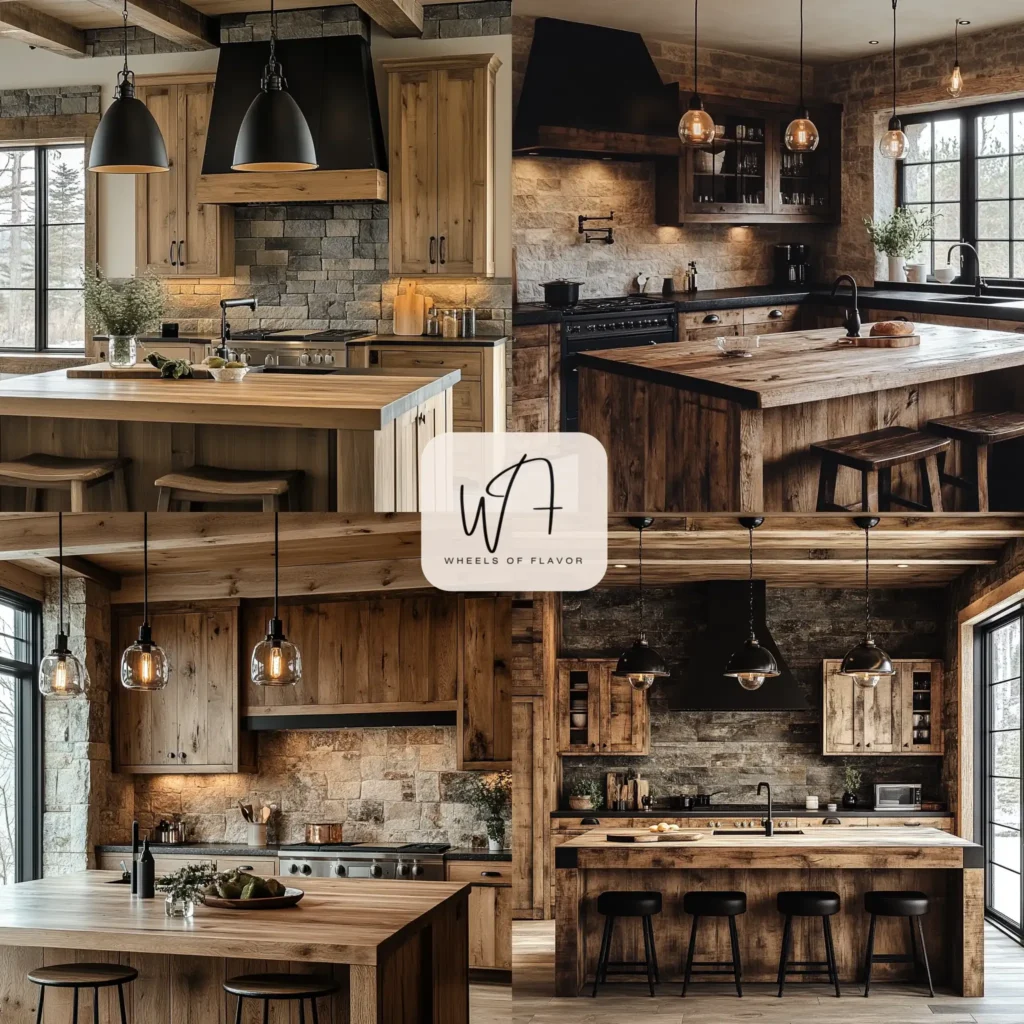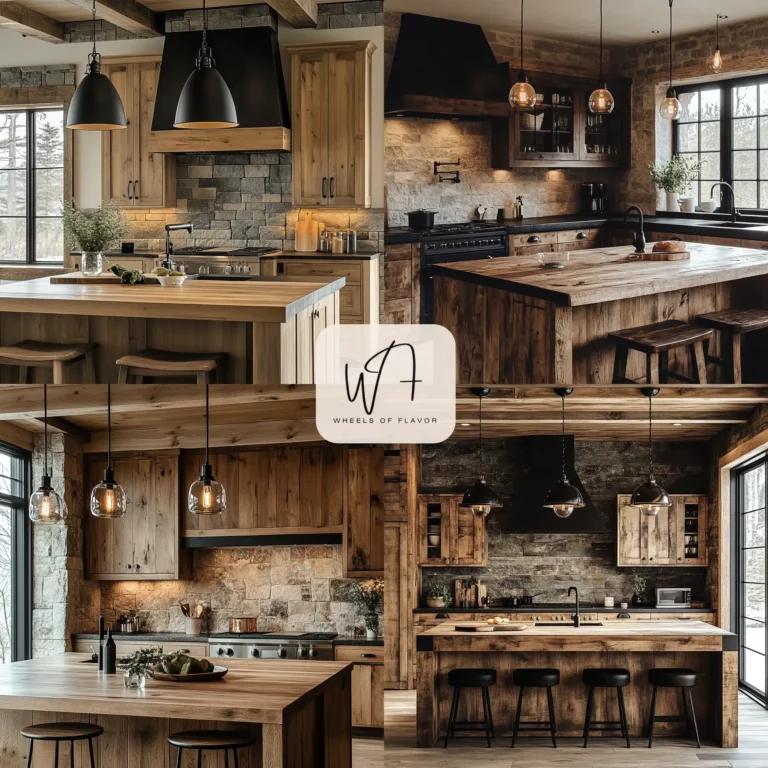Cabin kitchens are the heart of any rustic retreat, blending warmth, functionality, and timeless charm. Whether you’re designing a weekend getaway or a full-time woodland home, creating a cozy and inviting kitchen space is key to enhancing the cabin experience. In this article, we’ll explore six inspiring ideas to transform your cabin kitchen into a stylish and practical haven, perfect for gathering with family and friends.
Table of Contents
Why Cabin Kitchens Are Unique
Cabin kitchens stand out for their ability to combine rustic aesthetics with modern convenience. They often feature natural materials like wood and stone, creating a warm atmosphere that reflects the surrounding environment. These kitchens are designed for comfort, encouraging relaxation and connection, whether you’re sipping coffee by a fireplace or preparing a hearty meal after a day outdoors.
The focus on cabin kitchens also lies in their versatility. They can be compact yet efficient, making the most of limited space, or spacious and open, serving as the central hub of the home. By incorporating thoughtful design elements, you can craft a kitchen that feels both nostalgic and contemporary.
1. Embrace Rustic Wood Elements
Nothing says “cabin kitchen” like the rich texture of wood. Incorporate reclaimed wood for cabinets, open shelving, or a sturdy kitchen island to add character. Opt for natural finishes to highlight the wood’s grain, or choose a distressed look for a weathered, lived-in feel. Pair wooden elements with matte black hardware for a modern twist that keeps the rustic vibe intact.
For a cohesive look, consider wooden ceiling beams or a wood-paneled accent wall. These features draw the eye upward, making even a small cabin kitchen feel grand. To balance the heaviness of wood, add light-colored countertops, such as quartz or butcher block, for a bright and airy contrast.
2. Incorporate Cozy Lighting
Lighting sets the mood in cabin kitchens, creating a welcoming ambiance. Swap harsh overhead lights for warm, soft options like pendant lights with wrought iron or woven shades. Install under-cabinet lighting to illuminate countertops for meal prep while adding a cozy glow.
For a touch of charm, hang a vintage-inspired chandelier over the dining area or kitchen island. Edison bulbs or lanterns can enhance the rustic aesthetic, making your cabin kitchen feel like a retreat from the modern world. Dimmer switches are a practical addition, allowing you to adjust the lighting for intimate dinners or lively gatherings.

3. Add a Stone Backsplash for Texture
A stone backsplash is a game-changer in cabin kitchens, adding texture and earthy appeal. Choose natural stone like slate, granite, or stacked fieldstone for a rugged look that complements the cabin’s surroundings. For a more polished style, consider subway tiles with a stone-like finish or a herringbone pattern for visual interest.
The backsplash not only enhances the aesthetic but also protects walls from spills and splashes, making it a practical choice for busy kitchens. Pair it with grout in a contrasting color to highlight the stone’s natural beauty. This feature ties together the rustic elements of your cabin kitchen while adding a touch of sophistication.
For inspiration on incorporating natural materials, check out this guide to rustic kitchen design from Better Homes & Gardens, which offers practical tips for creating a timeless look.
4. Maximize Space with Smart Storage
Cabin kitchens often have limited space, so smart storage solutions are essential. Install open shelving to display vintage dishware or mason jars, adding both functionality and charm. Pull-out drawers, corner cabinets, and pantry organizers can keep essentials within reach without cluttering countertops.
A kitchen island with built-in storage is a great way to maximize space while creating a focal point. Use the island for prep work, dining, or even as a casual coffee bar. For smaller cabins, consider a portable island or a fold-down table to save space when not in use. These solutions ensure your cabin kitchen remains organized and inviting.
5. Choose Warm, Earthy Colors
Color plays a big role in setting the tone for cabin kitchens. Stick to warm, earthy tones like deep greens, rich browns, soft creams, or muted blues to evoke a sense of calm and connection to nature. These hues work well with natural materials, creating a harmonious look.
For a bold touch, paint an accent wall or cabinetry in a deep forest green or charcoal gray. If you prefer a lighter palette, white or off-white walls can brighten the space while still feeling cozy when paired with wooden accents. Textiles like plaid curtains or woven rugs can add pops of color and texture, tying the design together.
Explore more color ideas in our Styles and Trends blog, where we share tips for creating inviting home spaces.
6. Integrate Vintage or Handcrafted Details
Vintage or handcrafted elements bring personality to cabin kitchens. Look for antique hardware, such as brass or copper knobs, to add a touch of history. Handcrafted pottery, woven baskets, or a reclaimed wood dining table can infuse the space with soulful charm.
Incorporate a farmhouse sink for a nod to classic cabin style, paired with a gooseneck faucet for modern functionality. These details make your kitchen feel unique and lived-in, inviting guests to linger over meals and stories. Scour local flea markets or artisan shops to find one-of-a-kind pieces that tell a story.
Tips for Maintaining Your Cabin Kitchen
To keep your cabin kitchen looking its best, regular maintenance is key. Clean wooden surfaces with a gentle wood cleaner to preserve their finish. Stone backsplashes may require periodic sealing to protect against stains. For lighting fixtures, dust regularly and check bulbs to ensure consistent warmth.
Invest in durable, easy-to-clean materials for countertops and flooring, as cabin kitchens often see heavy use. If your cabin is a seasonal retreat, winterize the kitchen by draining pipes and storing perishables to avoid damage during cold months.
FAQs About Cabin Kitchens
What are the best materials for cabin kitchens?
Natural materials like wood, stone, and metal are ideal for cabin kitchens. Reclaimed wood for cabinets, granite or quartz for countertops, and stone for backsplashes create a rustic yet durable look.
How can I make a small cabin kitchen feel bigger?
Use light colors, open shelving, and mirrors to reflect light. A compact island or fold-down table can add functionality without overwhelming the space.
Are cabin kitchens expensive to design?
Costs vary, but using reclaimed materials, shopping for vintage pieces, or DIY projects can keep expenses down. Focus on high-impact elements like lighting or a backsplash for maximum effect.
Can I mix modern and rustic styles in a cabin kitchen?
Absolutely! Pair sleek appliances with rustic wood cabinets or modern hardware with a vintage sink to blend styles seamlessly.
By incorporating these ideas, your cabin kitchen can become a cozy, functional, and stylish space that enhances your retreat. Whether you’re drawn to rustic wood, earthy colors, or vintage charm, these tips will help you create a kitchen that feels like home.

